Mark Smith says that Pittsburgher Highland Farm is his third act. After a childhood on a conventional dairy farm, a career in real estate, and now, as a rancher in the Laurel Highlands, we spoke with him about his commitments to sustainability as well as passion for the majestic Highland Cow.
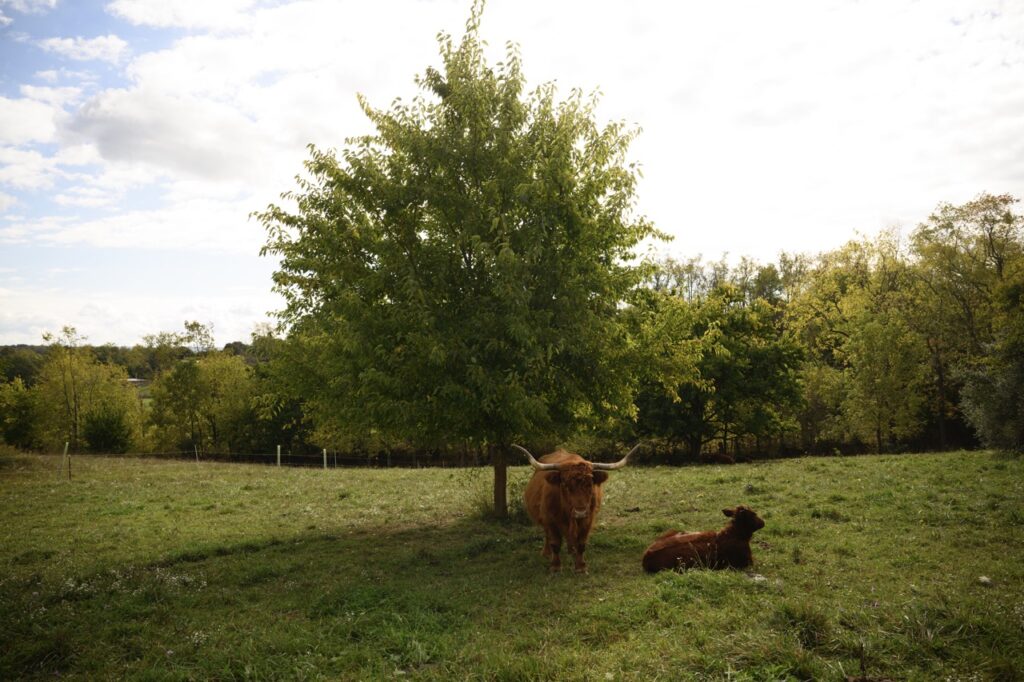
Sustainable, Local Meat is Just Better at Pittsburgher Highland Farm
Rancher Mark Smith, co-owner of Pittsburgher Highland Farm, holds a strong belief that his Scottish and Irish ancestors, upon arriving in America, surveyed the rainy, hilly, and rugged terrain of Western Pennsylvania and declared, “Yep, this is home.” Today, as Smith and his business partner, Dana O’Connor, populate their section of the Laurel Highlands with Highland Cattle – distinguished by their unmistakable reddish-brown coats and impressive long horns – it’s not hard to mistake a photograph of their ranch for the breed’s ancestral origins across the pond.
I came across Pittsburgher Highland at the Bloomfield Farmers Market, where the grass-fed, organic ranchers have vended since 2015. After chatting with O’Connor about her commitment to sustainable meat production and healthy eating, I left the market with one of her favorites: a Delmonico Steak. I prepared the thick and marbled cut as simply as I could, with salt, pepper, a quick sear and a trip to the oven. The steak turned out velvety smooth, subtly sweet, and juicy. It was easily one of the best steaks I’ve ever tasted.
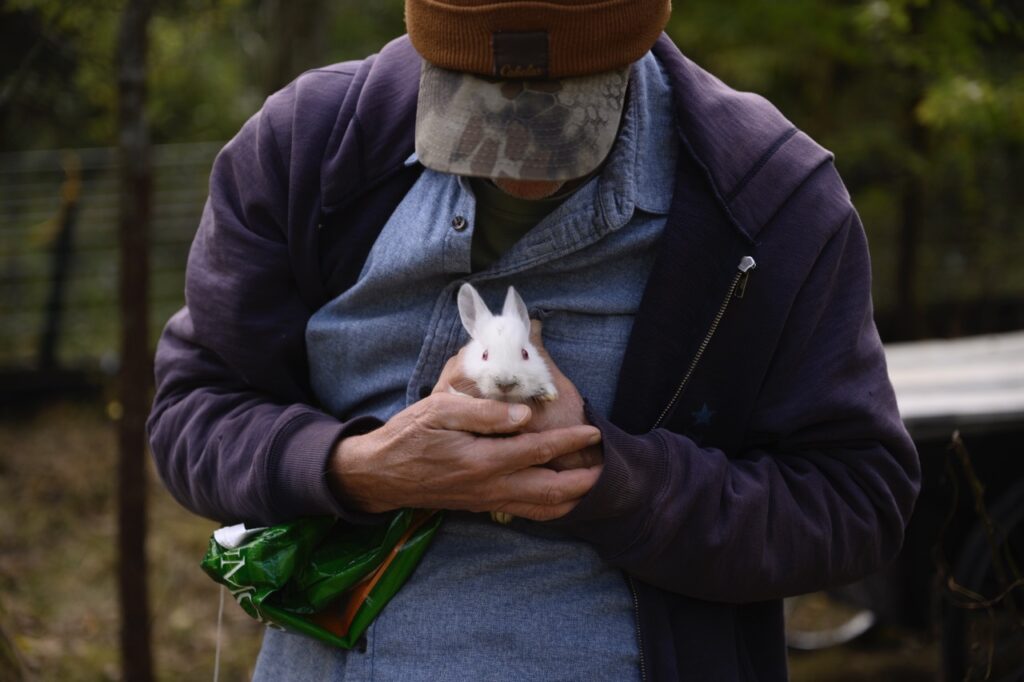
Growing a Canopy in the Highlands
“Hiya Bethie!” Smith calls us out to a cow who has been with Pittsburgher since almost the beginning. Like a happy dog, the giantess wags her rope-like tail as she saunters over to inspect the apple in Smith’s outreached palm.
I’ve joined Smith for one of his weekly tours of the farm. When the weather allows for it, Smith gladly shows interested patrons around the pastoral landscape. Just 45 minutes from Pittsburgh, he and his team house their sows and raise their calves. Eventually, the boys get shipped to their second location down the road to be processed into a large variety of high-quality products for excited customers.
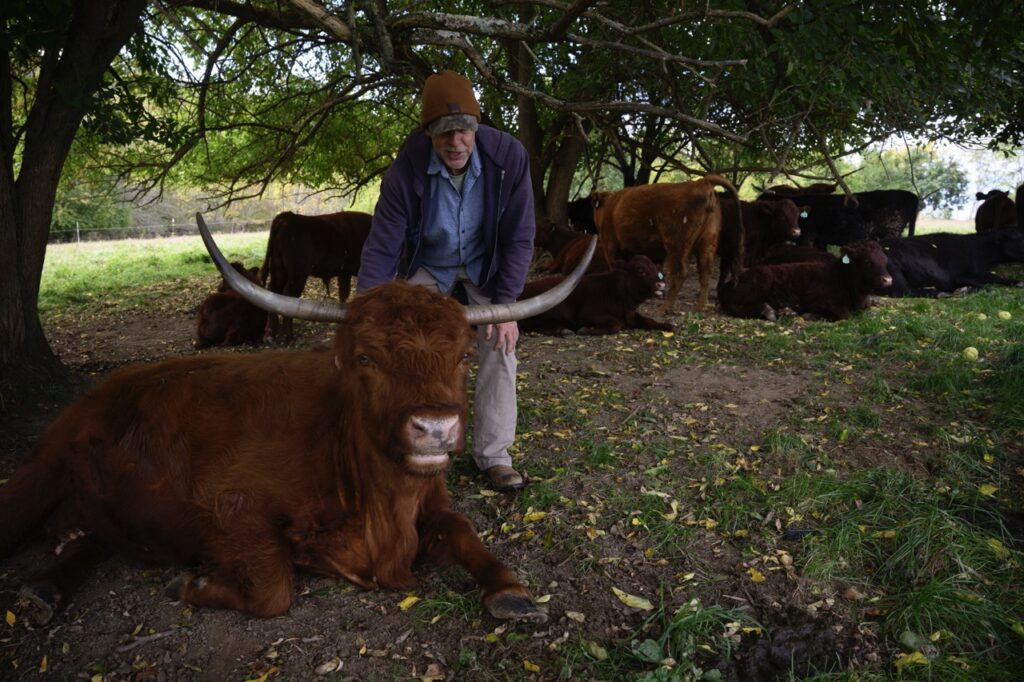
Smith is not just a Highland Cattle expert. He is an enthusiast, sharing facts about the ancient breed with a childlike excitement and wonder. Smith admits that while most people join the tours because the cows are undeniably cute, he hopes his attendees leave with a greater appreciation and understanding of the hard work it takes to be a farmer, as well as the creativity and trial and error farmers undergo to achieve sustainable outcomes.
The Growing World of Sustainability
Currently, Smith is really excited about “Silvopasture.” Silvopasture, a portmanteau of the Latin words “silva” (forest) and “pastura” (grazing), refers to the intentional integration of trees, forage, and livestock within a single plot of land. For Smith and O’Connor, that’s 122 acres of rolling green. The result is a multi-layered system, each component benefitting the others in an ecological dance. Silvopasture management will look different on every farm. Snapshots of silvopasture being practiced today show cows roaming through a grass carpeted woodland. Goats munching on the leaves from the branches of black locusts, a jungle gym for pigs made of shiitake inoculated logs, or turkeys strutting around apple trees, stopping to peck at patches of asparagus.
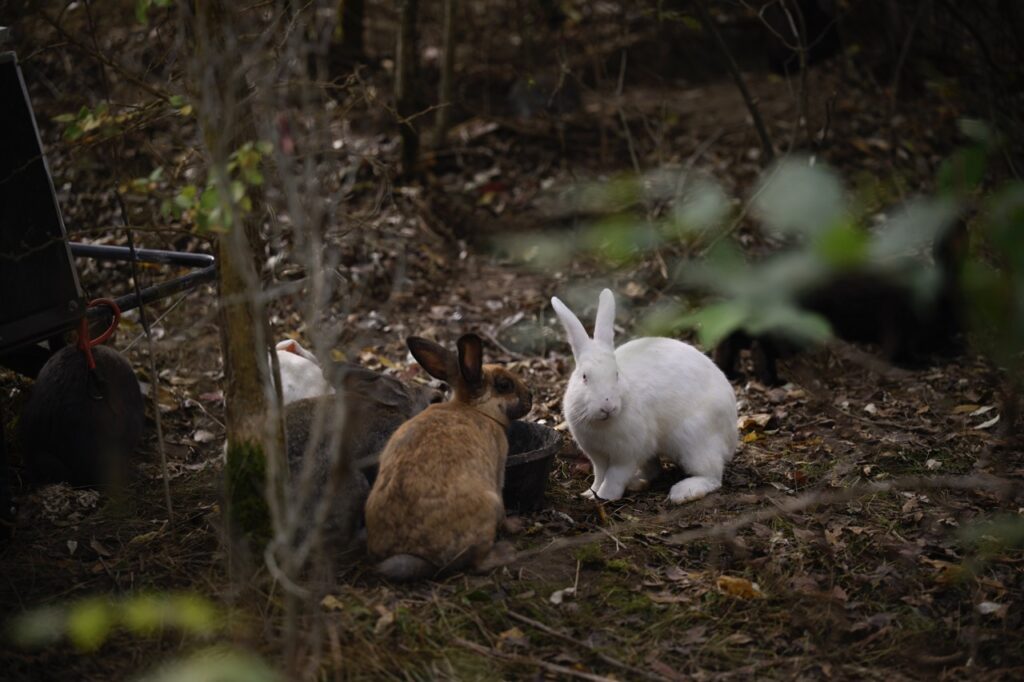
It’s all so aesthetically pleasing, but the benefits of an integrative pasture don’t stop there. A pasture planted with trees has the potential to sequester five to ten times as much carbon from the atmosphere than a treeless pasture of the same size. Additional trees and forage provide both a soil and canopy habitat for increased biodiversity. Improved soil fertility. Resiliency against erosion. As silvopastoralists, like Smith, manage their farms for both trees and livestock, they can diversify their production with nuts, seeds, fruit, timber, and mushrooms. Shading from trees can provide comfort to cool weather-loving animals like Smith and O’Connor’s highland cows.
With help from PASA Sustainable Agriculture, the Harrisburg-based organization elevating mid-Atlantic and Northeast farmers, Smith and O’Connor have begun their foray into the leafy practice. To extend their growing season and also create a “big time permaculture,” they hope to plant a mix of Black Locust, high reaching Poplars, and sweeping Willows.
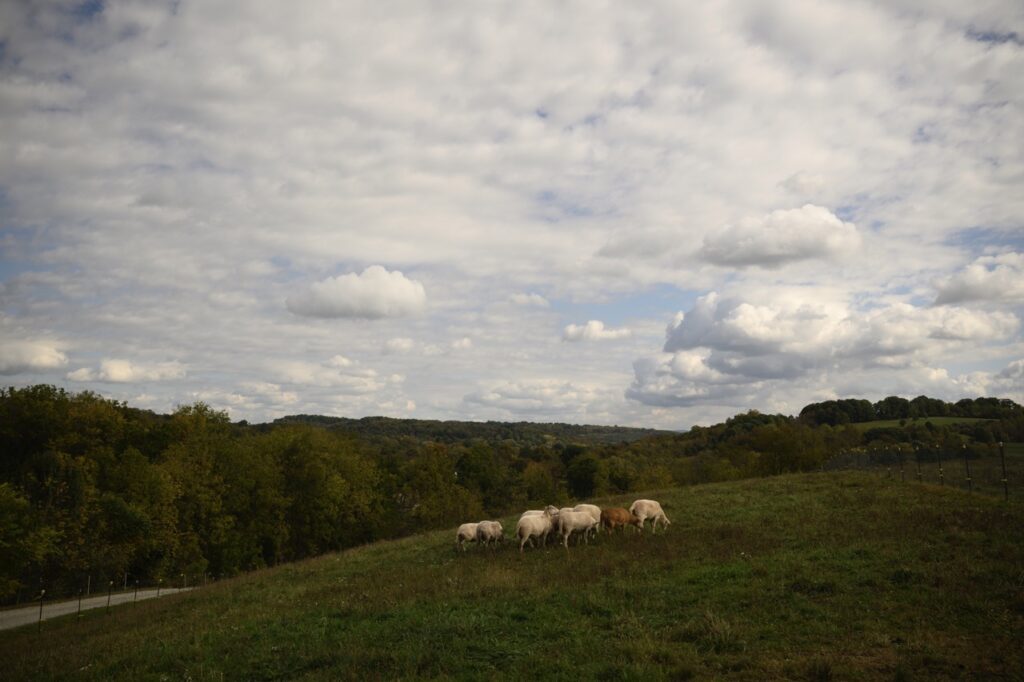
Plan Your Own Visit to Pittsburgher Highland Farm
Smith and O’Connor have established a ranch so lovely that to many visitors, Smith’s informative walking tour is not enough. At the top of the ranch sits a custom-built, solar powered tiny house that is used to hosting glampers ready to escape the city for a night or two. The “Highland House” offers access to peaceful hiking trails, spectacular stargazing, as well as glimpses at the fuzzy, friendly, and mystifying Highland Cattle.
Story by Nina Katz
Photography by Jeff Swensen
Subscribe to TABLE Magazine‘s print edition.
